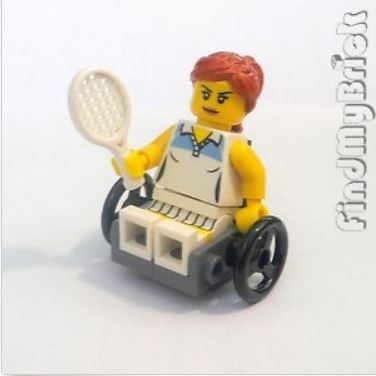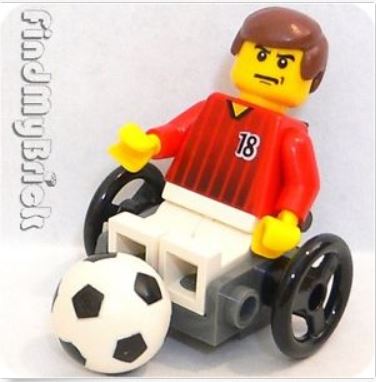Sometimes I try to take on big questions; today we’re going to keep it light and only tackle the nature of identity and the relationship between author and reader in interpreting an image.
It all started with a question about image descriptions. Image descriptions are a way of making the images in webpages more accessible, primarily for readers with print disabilities. Screen readers will read accessible text, but when they encounter a photo, say (to take an image at random)

the screen reader can’t read it or render any useful information from it unless you add an image description. To make sure that print-disabled readers aren’t left out, I would add the description “Image: Photo of golden retriever.” I can put that either in the body of the blog, or in the “alt-text” field of the photo when I upload it. Here, I did both.
When adding image descriptions, I’m always challenged by how much detail to include. The photo above is easy: there’s one major feature and it’s quick and easy to describe. When I describe people, I’ve tended to describe them using a couple of basic characteristics: gender; age(ish); race; and perhaps an additional detail or two (color of clothing; glasses; sitting/standing). When someone is in a wheelchair, I say that; when they’re not, I don’t say anything.
For example, I described this photo
as
slightly blurry black & white photo of a group of 6 people. In back, a young woman, two middle aged men and a middle aged woman; in front of them, an older woman, and in front of her, a child of about 10.
When I started adding image descriptions to the large number of people photos in the presentation we put together to introduce CREEC, I started tripping over the question of how — if at all — to describe race and ethnicity. Many of the photos depicted people whose races were (1) obvious; and (2) known to me. For example, this awesomely cliched photo that Tim and I had taken around 2002 as an Official Fox & Robertson Photo:
I described it:
Tim and Amy at a conference table ca. 2002. Tim is a white man with short blond hair who uses a wheelchair. He is dressed in a suit. Amy is a white woman with short brown hair and glasses. She is sitting in a chair, also wearing a suit. In the foreground, a table posed with law books, a speaker phone, files and mugs.
That was easy: I’m white; Tim’s white; I know our races. Tim’s disability is visible. All the props on the table probably aren’t that relevant, but my view is that the description helps convey the posed-ness of the photo.
But what about photos depicting people whose race or ethnicity was either unknown to me or not easily described? This, in turn, raised the obvious question whether it is relevant at all. I felt torn between trying to achieve accuracy for print-disabled readers and adding unnecessary focus on race and ethnicity. I posed this question on Facebook, and deeply enjoyed the ensuing discussion.
When adding image descriptions to photos, what do you do about perceived vs. known vs. visible ethnicities? For example, if I’m in a photo with an African-American woman, I would say something like, “White woman in white shirt and jeans; African-American woman in dark shirt and skirt.” Easy. But what about describing someone whose ethnicity is likely neither white nor African-American but is not known to me? Or someone who “looks” “white,” but I know would be annoyed by being described as “white.” Describing degrees of skin tone seems weird.
A surprising number of people responded with something like, “I don’t describe race.” From Andrew Montoya:
Generally I do not comment on race/skin tone in alt text unless it’s germane to the picture.
From Carrie Lucas:
I don’t describe skin color. If race is important to the picture, or skin, hair, etc, then describe it. Otherwise just say “person” or “people of multiple races.”
My response (edited for coherence):
But that would mean that (respectfully) I’m making the decision for the reader when race/color/ethnicity are relevant. I try to be complete and objective in descriptions, though completeness is never possible and there is always editorial discretion.
If you don’t mention race, do you say “woman in a wheelchair” “older woman” “young girl” or just “person”? What matters? Gender? Race? Age? Disability? Hair color? Skin color? At what point are we short-changing a blind reader who just wants to know what the photo looks like.
Carrie:
I wouldn’t say race; I would say “dark colored skin, light colored skin, olive colored skin.”
Me:
But if I say that [Chinese-American colleague] has “olive skin” don’t I leave out something important, that is, that he’s Asian? Or do I have to anatomically describe his eyelids?
Andrew:
But then where do you draw the line? How much detail do you use to describe the individual’s clothes, type of glasses, how the hair swoops over an eye, where the person’s shadow falls against the all white background even? It seems a line must be drawn somewhere lest you lose the content to the details of the description. So unless race is part of the relevance of the picture, I prefer to let people be people.
I will state that a person is in a wheelchair or using other equipment if it’s relevant. I rarely mention age, unless it’s relevant to the description (i.e., saying “cranky man” doesn’t convey the image as well as saying “cranky old man” for the stock picture of the muppet in the theater box guy). I do often state gender, as it seems a natural descriptor, but generally only for pictures where there’s only one gender present. However, stating a race or skin color where it’s not relevant to the picture seems odd and forced to me. As for determining relevance, I think that I’m already editorializing by having used the picture. I intend it to convey a particular thing by using it, so that’s where I focus my alt text description.
Corbett:
Some descriptions I have seen include information that is visible such as describing the skin tone but not assigning racial identity. So the description might say: “a light skinned female appearing person sits in a wheelchair. A dark skinned male appearing person stands nearby wearing a dark suit with a light shirt and plaid tie.”
Good point: you can’t assume gender either.
Carrie:
It depends on why you are including the picture; whether race is important to the purpose of the picture.
Me:
But I think that’s circular, in the sense that “importance” is created by the interaction of creator and reader. Should my purpose be the be-all-and-end-all of the decision? I totally agree you have to make choices or you’d spend 3 paragraphs describing the building in the background of the photo, etc. But the question of when race is relevant seems to me to be one that the reader should make.
Carrie:
Yes, you are the author.
Me:
Don’t you often see things in photos that the photographer or user didn’t see or intend? I think we’re heading into lit crit territory!!!
That is, it was starting to sound very vaguely like the discussions of author, reader, and text that my much smarter classmates were having in 1981. Which, to me, meant that I was way in over my head, and thus could start making shit up with impunity!
Then my law school roommate, Kristin Robinson, chimed in. She was a grad student in American Studies (IIRC) when the two of us and a med student shared a house in 1985, and we’ve only recently reconnected on Facebook.
Long descriptions include information that is relevant to understanding the reason (instructional goal) the image has been included. It highlights salient information. So, if race or other aspects of people’s appearance is salient, you would include it. If it isn’t, you wouldn’t.
So perhaps in a strictly educational context, the teacher’s purpose is more important than total transparency. Kristin also provided a helpful link to guidelines for describing science and technology images in the educational context. The very first guideline is
Brevity. The most frequent recommendation from respondents was for more brevity in description. Simply put, it takes people with visual impairments more time to read books and articles than people without visual impairments and the process should not be further slowed down by unnecessarily long image descriptions.
For all my pontificating about the need for enough detail to let print-disabled readers interpret the image, I may also be annoying the crap out of them with verbose image descriptions.
Here’s where I end up. Once you start describing people — that is, going beyond something like “three people in the background” — you owe it to your readers to give a description sufficient to let them decide what features are relevant. To my mind, that includes at least (perceived) gender, age, race/ethnicity/skin tone, and [visible] disability/lack.
There will always be filtering and interpretation in the descriptions and I realize that my perceptions (and thus descriptions) will not always be accurate. That I may describe someone in a way that suggests the wrong identity, or that suggests an ethnic, gender or disability identity where the subject would prefer to be just “a person.” So I’m making a decision that affects not only the reader but the subject.
Ultimately — perhaps by dint of what I do for a living — I don’t think I should be deciding for the reader that race and other identities don’t matter. I may use a photo for one purpose, while my reader perceives other meanings. When I see a photo, my eyes and brain (with its inevitable set of life experiences and preconceptions) conspire to give it meaning. Sometimes that meaning may be different from what the photographer and/or author intended. My goal in creating an image description should be to try — with acknowledged and inevitable limitations — to provide the opportunity for a print-disabled reader to have that same conspiracy of brain and ear to give their meaning to the image.






























